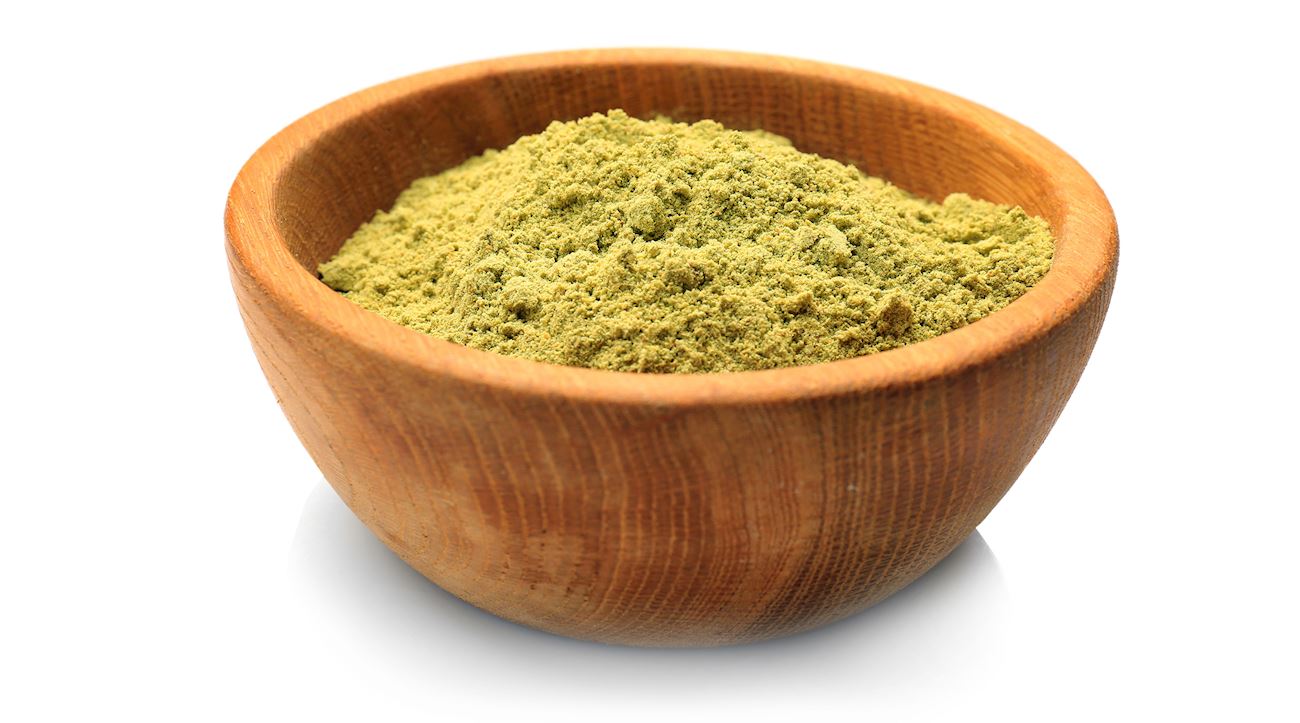Asafoetida is a dried gum resin obtained from the taproot or rhizome of giant fennels, particularly Ferula assafoetida. The plants used to produce the spice are native to Iran and Afghanistan. The resinous juice starts to coagulate when exposed to air, and it has a strong and pungent odor that's similar to garlic.
When the product sets to a solid mass, its color varies from grey to black, but it's usually reddish to brown. This spice can be bought in several versions – tears, mass, paste, and powder. The tears are the purest, the mass is the most commonly available commercially, and the powdered version usually contains additions such as gum arabic, flour, and turmeric.
Mahleb or mahlepi is a unique spice made from the seed kernels of the Prunus mahaleb (mahaleb cherry) tree, native to the Middle East and Southeastern Mediterranean.
The soft and chewy seed kernels are ground to a powder and used as a spice in various regional kinds of bread, cookies and cakes, meat stews, and pilafs. The taste can be described as sweet and slightly bitter, with a hint of almond and cherry. It is also believed that mahleb has medicinal properties, helping with digestive issues, respiratory problems, and inflammations.
Filé powder or gumbo filé is a herbal powder made from dried and ground leaves of the Sassafras albidum, commonly known as the sassafras tree. These powdered leaves were originally used by Choctaw Indians, but they soon started to be used by the Cajuns in Louisiana, who added it to stews, gumbos, and soups as an earthy thickener and flavoring.
Filé powder should be added to gumbo just before serving, when it's off the heat, because otherwise it can become stringy and too thick. Interestingly, this herbal powder is mentioned in Hank Williams Sr.'s song Jambalaya (On the Bayou).
Cubeb is a complex pepper variety native to Java, Indonesia. The pepper starts out as the immature fruit of a tropical climbing vine that sometimes grows in coffee plantations. The vines produce small flowers that turn into berries, which are gathered in the early summer.
The berries are then dried in the sun until they turn wrinkly and brown-black. Cubeb pepper barely has any heat, and the flavors are bitter, refreshing, and slightly numbing. Originally, it was grown for medicinal purposes, but over time it became popular as an ingredient due to its peppery and bitter notes.
English mustard is a traditional mustard variety originating from England. This type of mustard is characterized by its bright yellow color and thick texture. Although it’s often enjoyed as a condiment that’s used with cold or hot meat dishes, English mustard is most commonly used as a flavoring or cooking ingredient due to its strong flavor.
There are many bottled versions containing this mix of yellow and brown mustard seeds, but there’s also the powdered form which is mixed with cold water before use to unleash its full range of heat and flavors. For a milder flavor, mix it with milk instead of water.
Amchur is a spice and condiment originating from India, but it's also often used in Pakistan. It's made from unripe mangoes that have been sliced, dried in the sun, then ground into a powder. The resulting powder has an intense aroma and tangy flavor.
It adds a nice level of acidity to a vast number of vegetarian dishes, especially in Northern India, where it's used in the same way as lemon juice or vinegar are used in other parts of the world. It's recommended to add amchur to curries, dals, pickles, and chutneys due to its fruity and tangy flavors.
This saffron variety is grown exclusively on Azerbaijan's Absheron Peninsula for more than a thousand years. It is usually grown in small quantities on farm fields, and currently, 1 kg of Absheron saffron costs about $11,000. The expensive spice is typically used in saffron-rice plov, one of the national dishes of Azerbaijan, which is commonly served with a variety of fresh herbs and vegetables on the side.
TasteAtlas food rankings are based on the ratings of the TasteAtlas audience, with a series of mechanisms that recognize real users and that ignore bot, nationalist or local patriotic ratings, and give additional value to the ratings of users that the system recognizes as knowledgeable. For the “7 Worst Rated Spices in the World” list until April 19, 2025, 1,329 ratings were recorded, of which 679 were recognized by the system as legitimate. TasteAtlas Rankings should not be seen as the final global conclusion about food. Their purpose is to promote excellent local foods, instill pride in traditional dishes, and arouse curiosity about dishes you haven’t tried.



